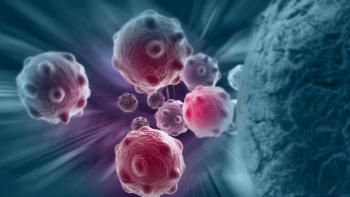
Chronic GVHD Risk Factors and Prevention
Panelists consider key risk factors for chronic GVHD, including the degree of donor transplant matching, patient age, intensity of conditioning, use of ablative doses of total-body radiation, and presence of acute GVHD.
Episodes in this series

Transcript:
John F. DiPersio, MD, PhD: What do you consider risk factors for chronic GVHD [graft-vs-host disease]?
Pashna N. Munshi, MD: If they’ve had acute GVHD or repeated flares, they’re certainly at a much higher a risk of chronic GVHD. Mismatched transplants would be another reason to have chronic GVHD.
Hannah Choe, MD: Older age.
Pashna N. Munshi, MD: And older age. Yes.
Yi-Bin Chen, MD: The intensity of conditioning and the use of ablative doses of total-body radiation are well-described risk factors. As Pashna mentioned, the degree of matching is the leading 1. As you move into match donors, you have others that haven’t been identified in large studies. It’s fascinating that the presence of acute graft-vs-host disease, as the patient journey continues, has long been the leading risk factor for development of chronic. With the latest innovations in GVHD prevention, that might be changing. It will be an interesting to see if we’re able to separate acute alloreactivity from chronic. If you look at the randomized bone marrow vs PBSC [peripheral blood stem cell] in the CTN 0201 trial, the risk of acute wasn’t all that different, but chronic was significantly lower with bone marrow. The recent approval of abatacept, for unrelated donor transplant prophylaxis, came on heels of decreasing acute significantly but did not seem to have a great signal in the reduction of chronic graft-vs-host disease. With newer methods of prophylaxis, we may start to see a separation.
Pashna N. Munshi, MD: What are your thoughts on that regarding post-transplant [PT] cyclophosphamide, which is used as GVHD prophylaxis…and nonhaploidentical settings?
John F. DiPersio, MD, PhD: It’s hard to put all these studies together, but there are 3 things that seem to have impacted the rate of chronic GVHD in the setting of transplantation. The use of bone marrow vs peripheral blood. Obviously, there’s less chronic GVHD. That’s 1 thing. The second thing is that post-transplant cyclophosphamide has primarily altered the rates of chronic GVHD. It’s still unclear because I always think of acute GVHD as the precipitating event for the development of chronic GVHD, the biology. It reminds me that I don’t know as much as I think I know about this. The third is ATGAM. Lots of crazy studies have been done with ATGAM around the world, but 1 thing that seems to come from all these studies is that there seems to be a lower rate of chronic GVHD primarily. Other than those things, there hasn’t been anything. The abatacept study doesn’t suggest and didn’t really demonstrate a big difference in chronic GVHD.
I don’t know what you all think about that, but those are the only studies that have shown me that there’s a difference in outcome for chronic GVHD, G-CSF [granulocyte colony-stimulating factor], ATGAM, and PT cyclophosphamide. As we look at other agents in the future, that will be the case as well. JAK inhibitors haven’t been studied as well in the chronic GVHD setting, but they may also impact chronic GVHD. Yi-Bin?
Yi-Bin Chen, MD: It will be interesting to see where we move. If we’re still going to view this GVHD prevention as 1 package or if we’re going to separate them, giving certain things to prevent acute. Then after transplant, depending how the patient is doing, we can make interventions to prophylax or prevent chronic graft-vs-host disease. Hopefully we’ll become a bit more elegant in how we do this going forward, instead of giving 1 package and saying it will hopefully work to prevent both.
Transcript edited for clarity.
Newsletter
Stay up to date on recent advances in the multidisciplinary approach to cancer.























































































